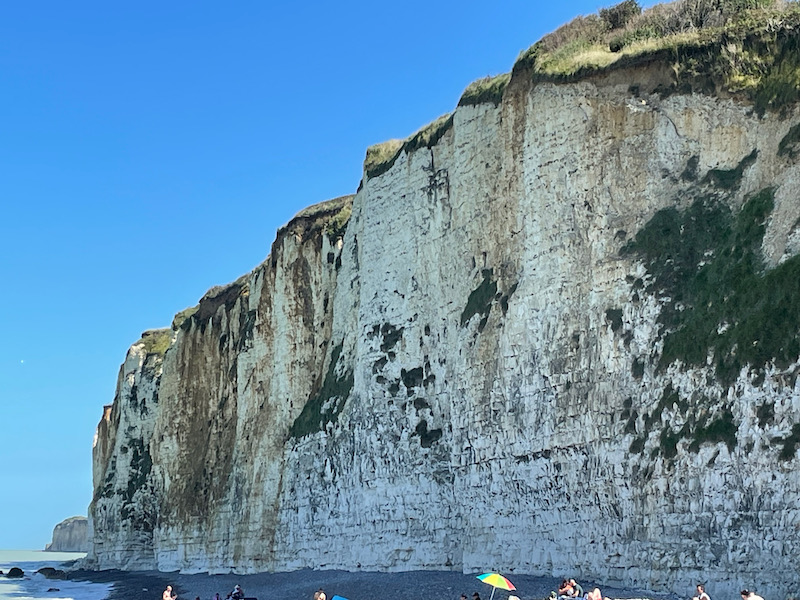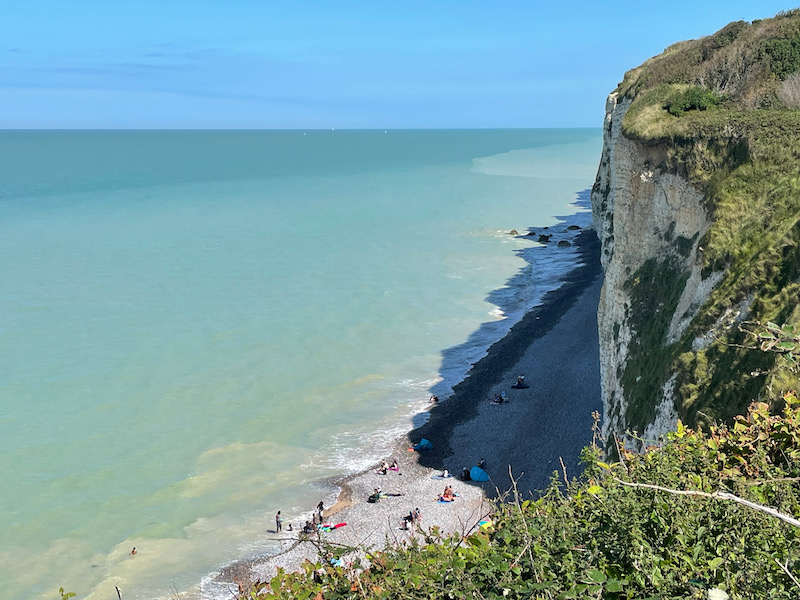Our Blog - Normandy 2023 - Veules-les-Roses, France
Another Plus Beau Village, this one with plenty of restaurants, half-timbered houses, and 4 mills along the river. Like many of the seaside towns we've been to on this trip, parking was a bit of a pain. We ended up parking up on the top of the cliff and walking down. It is actually one of the oldest villages in this part of the country, dating back to the 4th century. In June 1940, there was a battle here for a couple days, in which the Germans came out ahead. The seafront of the town was destroyed by the fighting. The wreck of the Cérons, a patrol that was sunk as part of this battle, is visible on the beach at low tide (we didn't see it, so the tide must not have been low enough). The cliffs that you can see are part of what is called The Alabaster Coast, which runs for quite a ways and you may see in a few blogs this week.
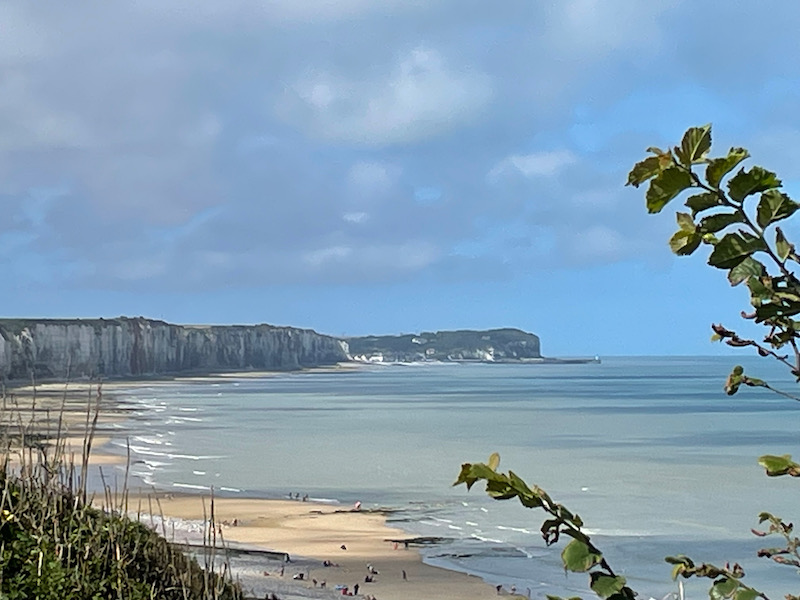
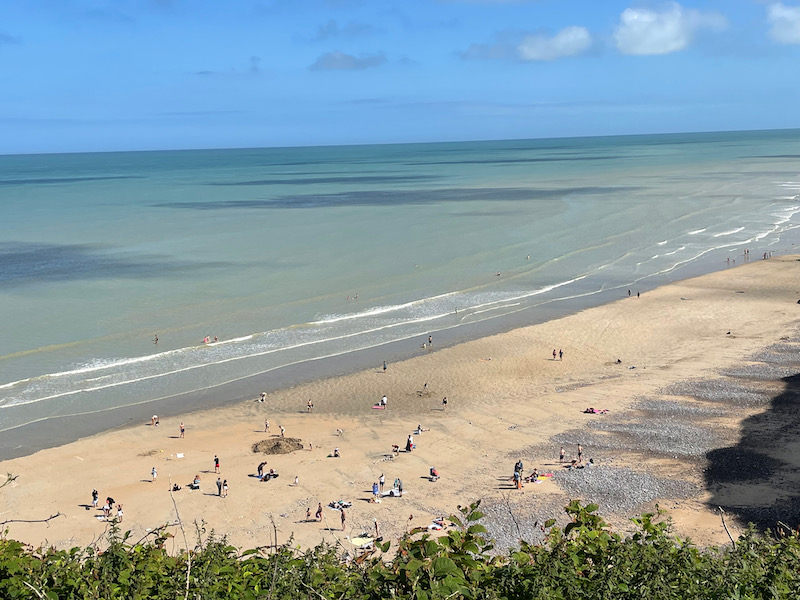
France’s smallest river, the Veules, runs through the village (hence the mills in town). The water from the river has been used to cultivate watercress since the 14th century, which supposedly is renowned for its particular taste and the finesse of its leaves. There are oyster beds just offshore and the local oysters have won awards, so of course we started at an oyster bar for lunch! The population has been steadily declining, from 1600 just before 1800 to a little over 500 now. The town itself is quite nice with stone and half-timbered houses on small, windy streets.
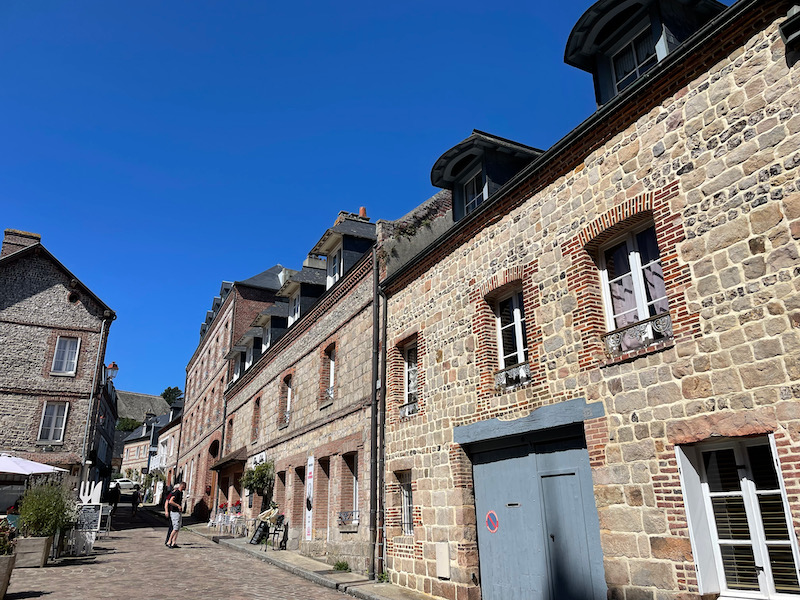
The Church of Saint Martin dates from the 13th century, with the bell tower remaining from that church. The rest of the church was rebuilt at the end of the 15th and beginning of the 16th century.
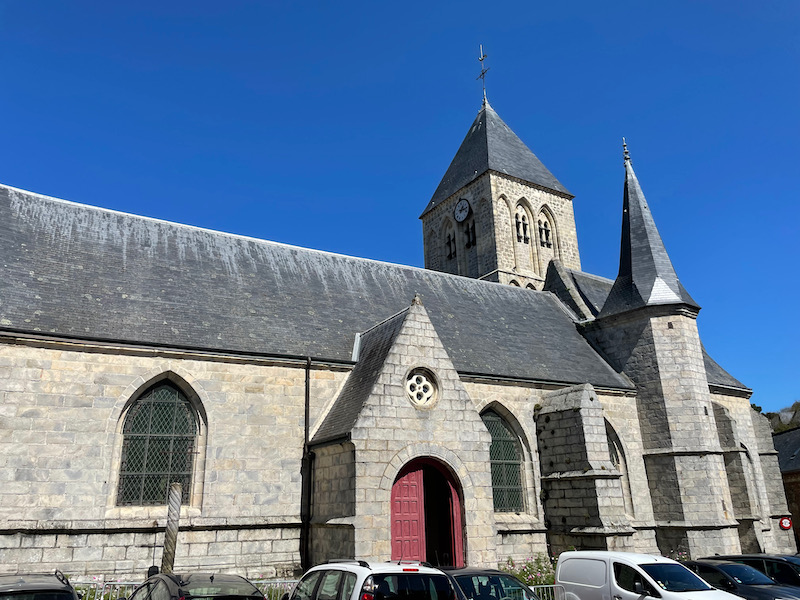
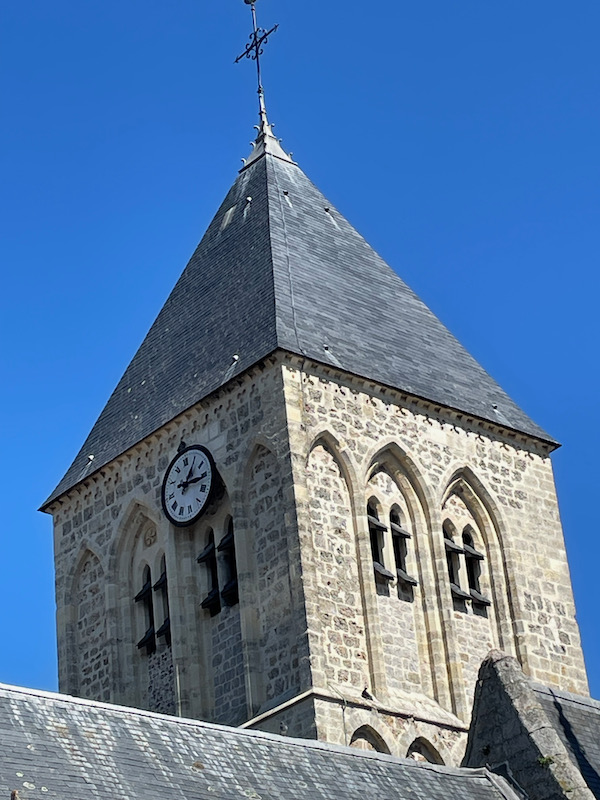
The nave has 3 sections, separated by large pointed arcades supported by sculpted sandstone pillars. All 3 are covered with a wooden roof that resembles the hull of an overturned boat, which we have seen many times before. The cross-beams are carved with dragons.
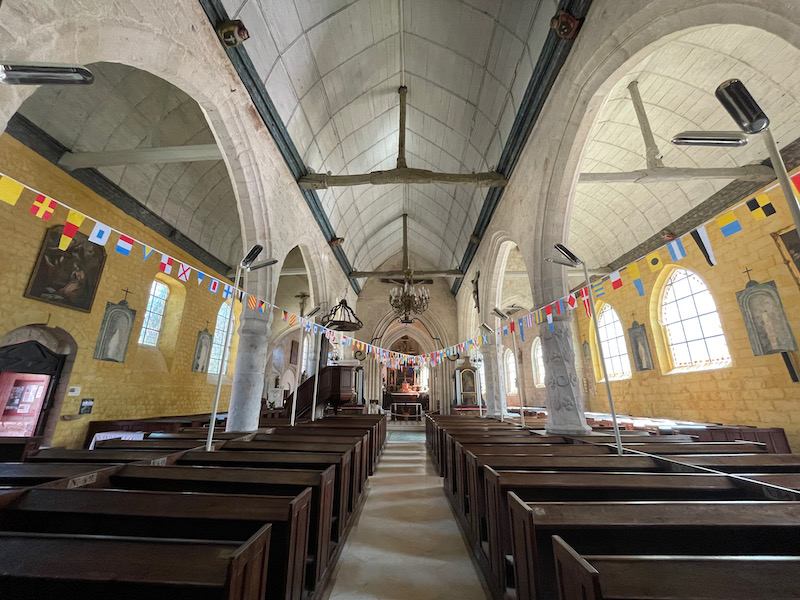
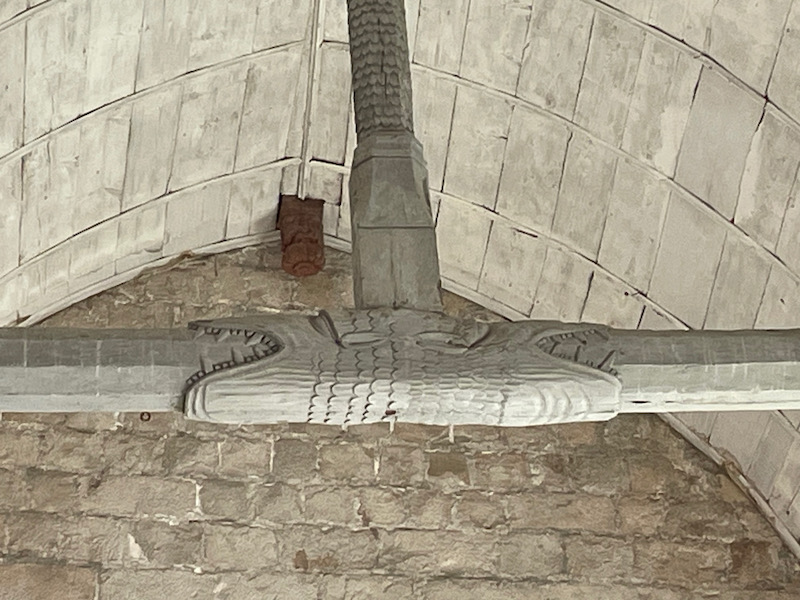
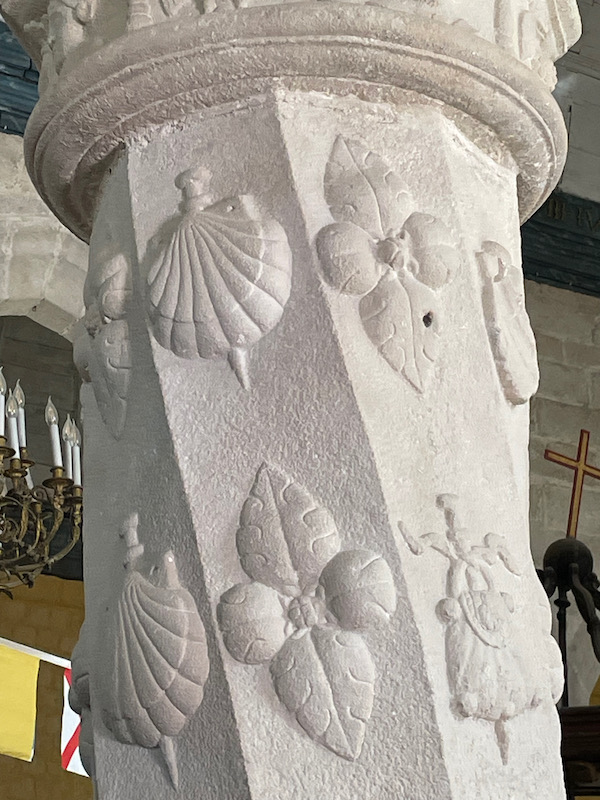
The altar in the apse dates from the Renaissance period, with a painted canopy over the altarpiece and the wooden ceiling painted with clouds.
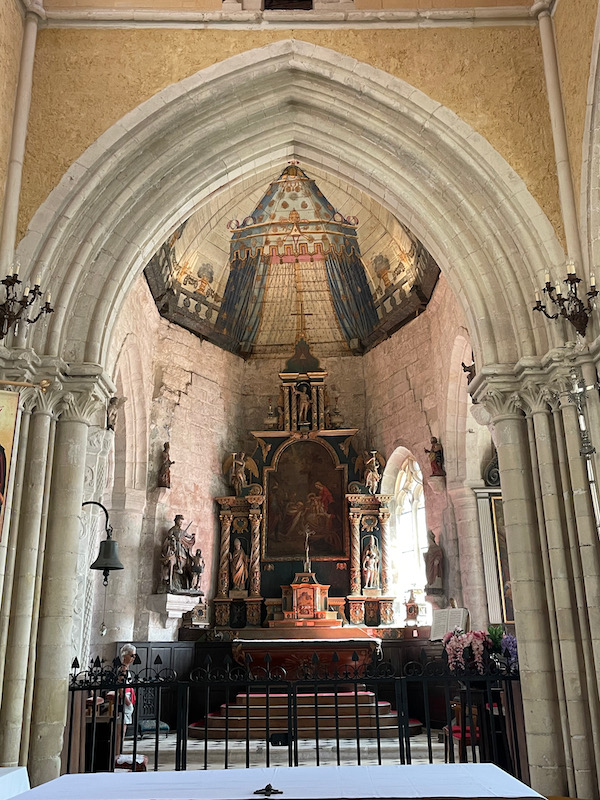
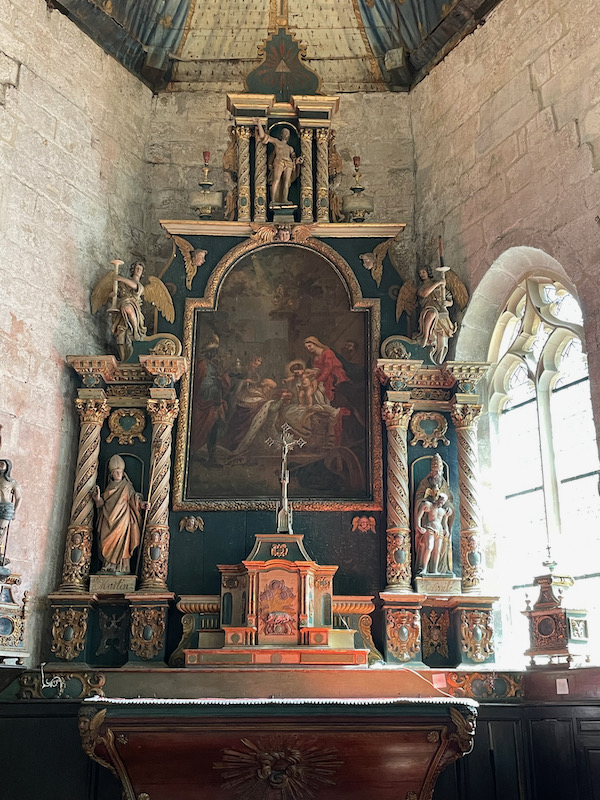
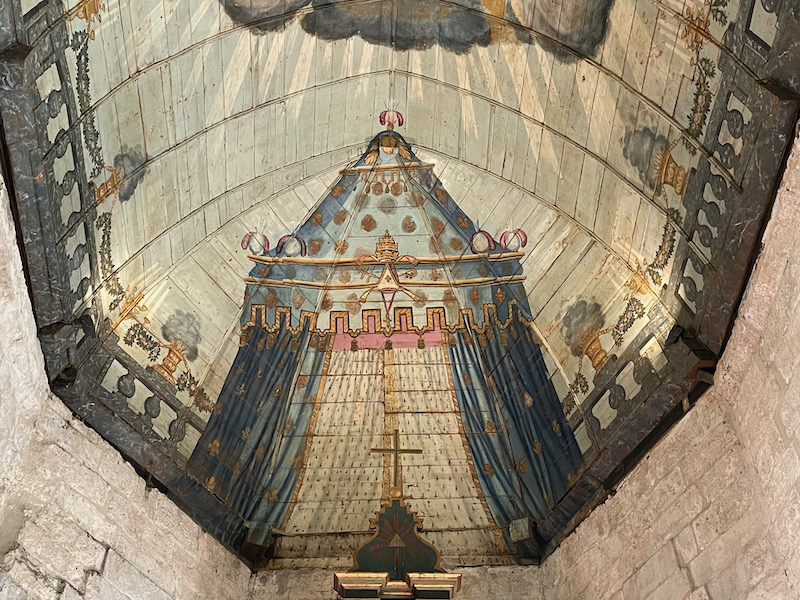
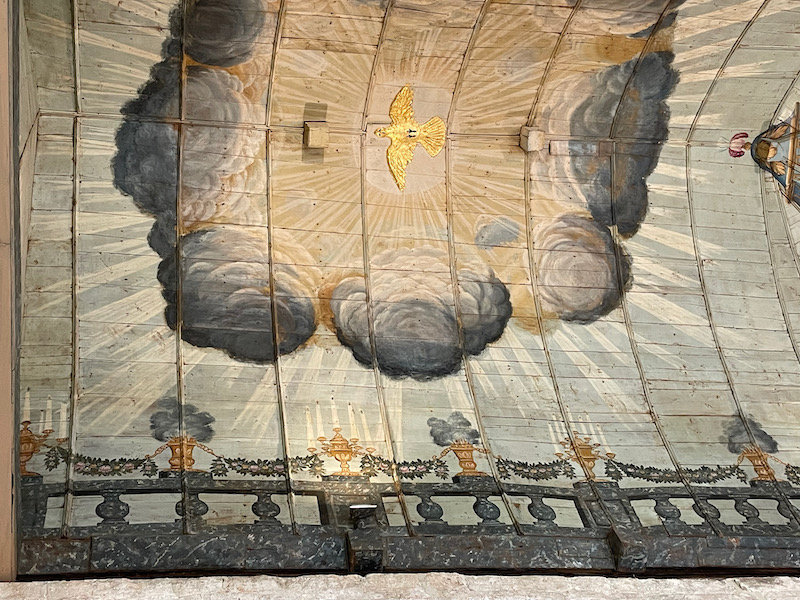
We have seen several of these statue groups in Normandy, this one from the 17th century representing the Entombment.
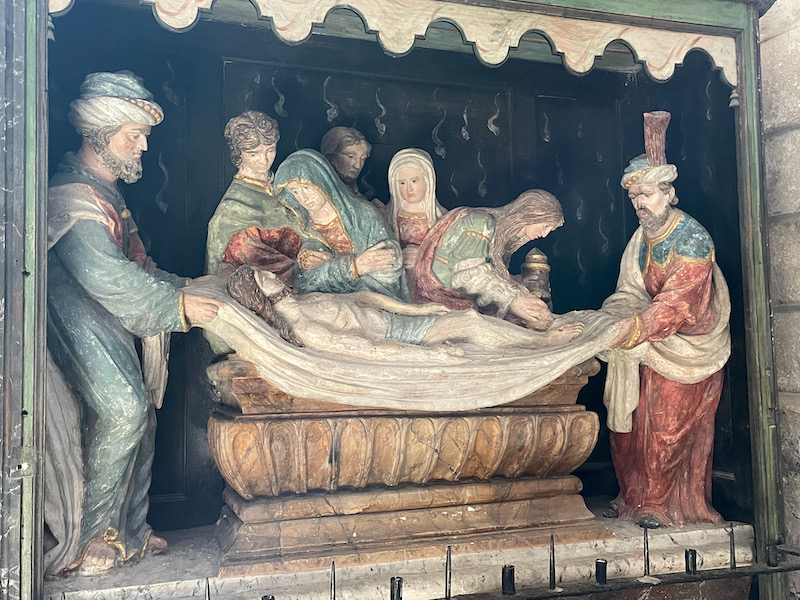
A polychrome wood statue from the 16th century representing Saint Martin, and another polychrome wood statue that is in the apse.
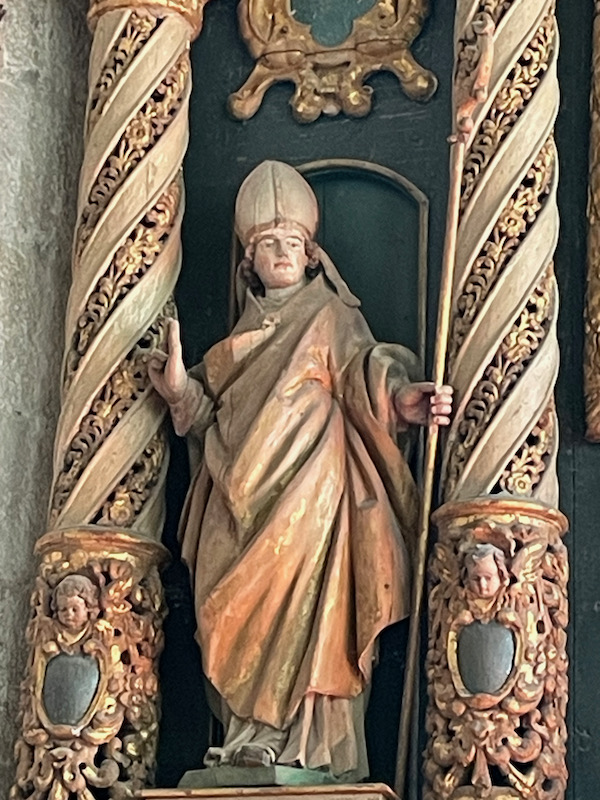
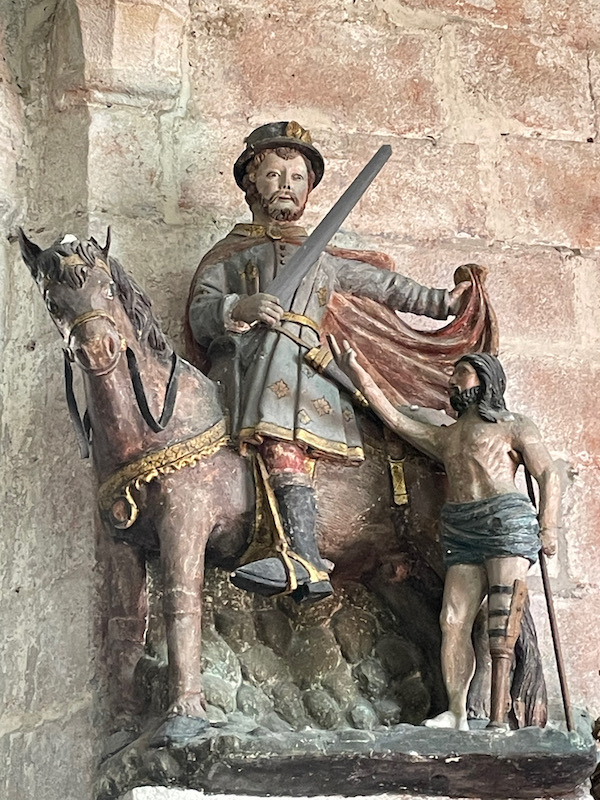
The Baptismal font was very colorful.
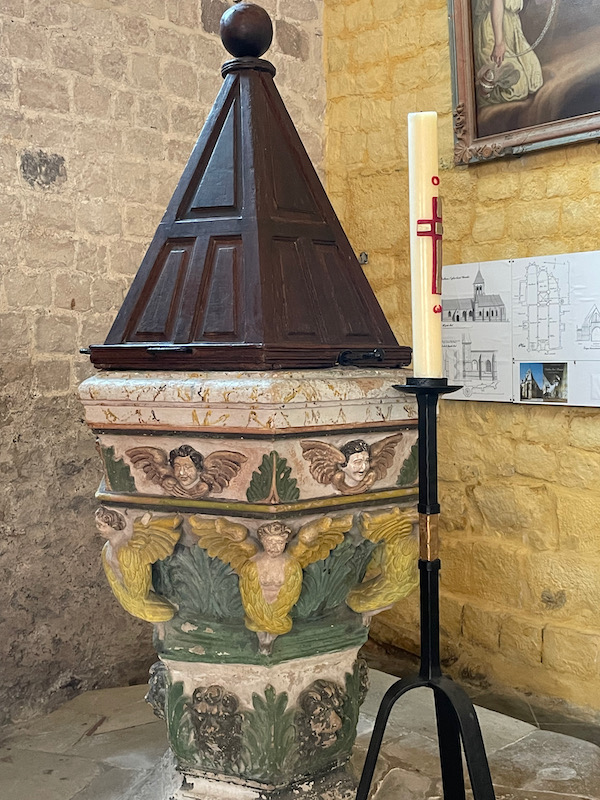
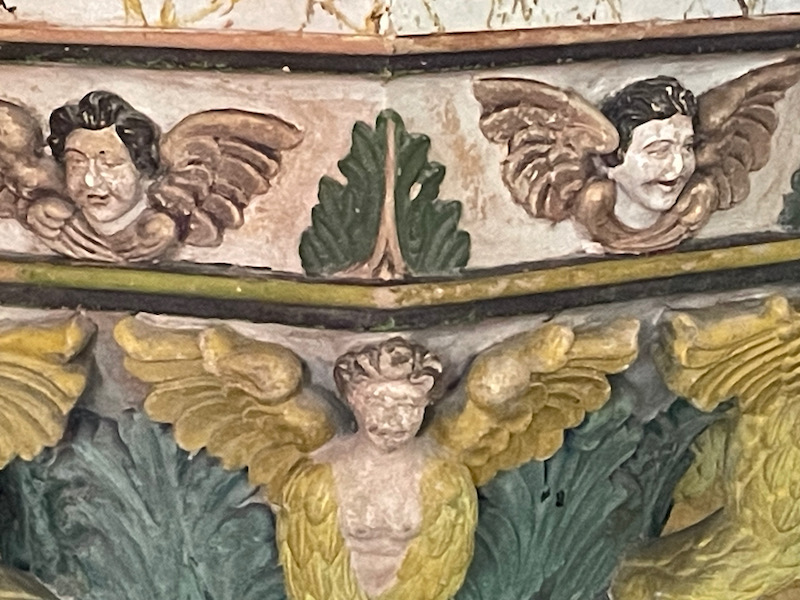
Victor Hugo would come here often to stay with a friend. In memory of his visits, the city of Paris moved several fragments of a monument erected in 1902 to the village. There are 3 bas-reliefs shown here, this one showing Victor Hugo at the rostrum of the National Assembly.
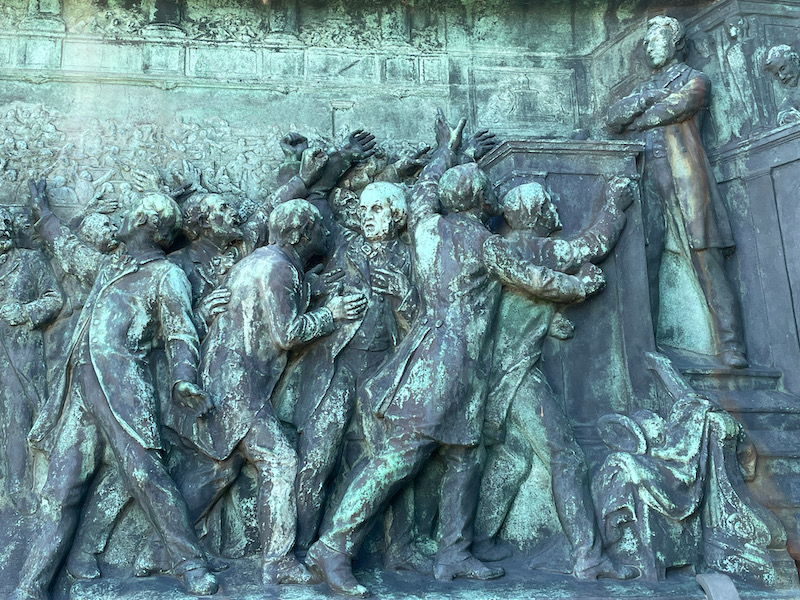
By the time we finished our tour, the tide had come in and, as you can see, there is no sand visible, just the rocks. Scroll back and check out the 2nd picture and see the yellow sand there, and then the more grey pebbles on the right-hand side of the picture as a comparison.
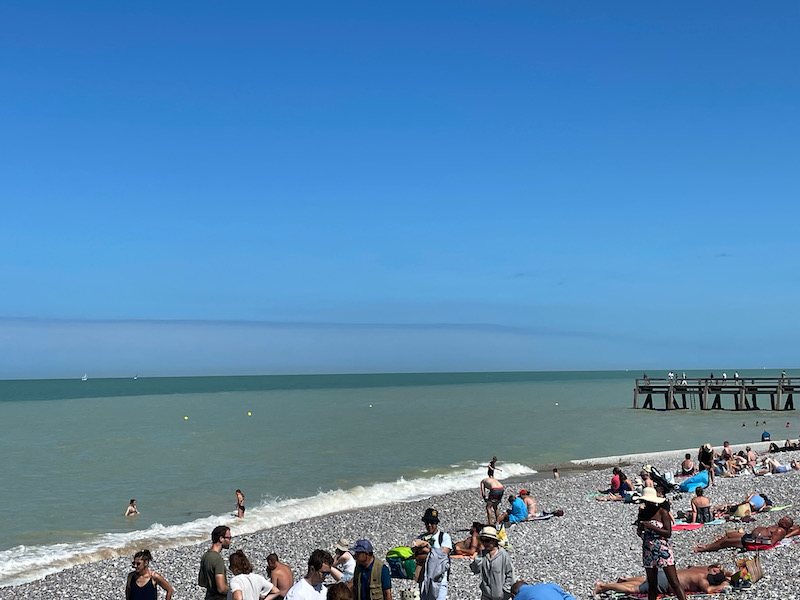
A few more cliff pictures as we headed back up to the car.
